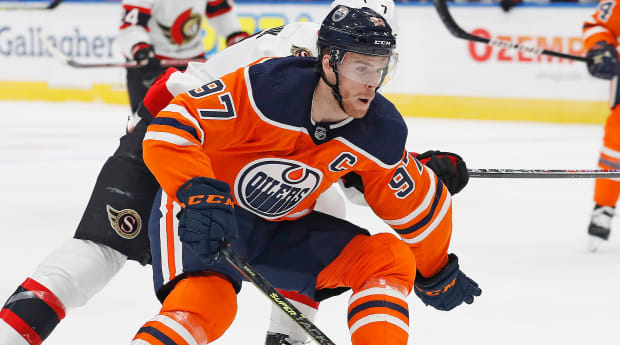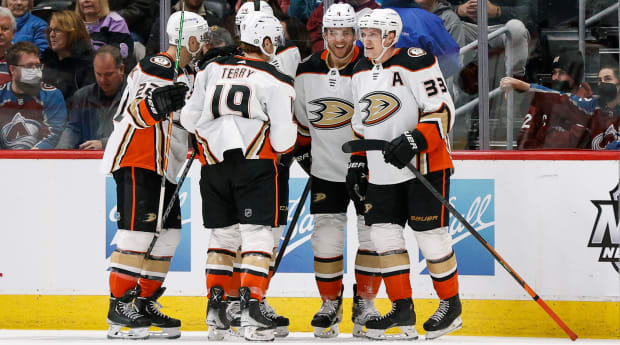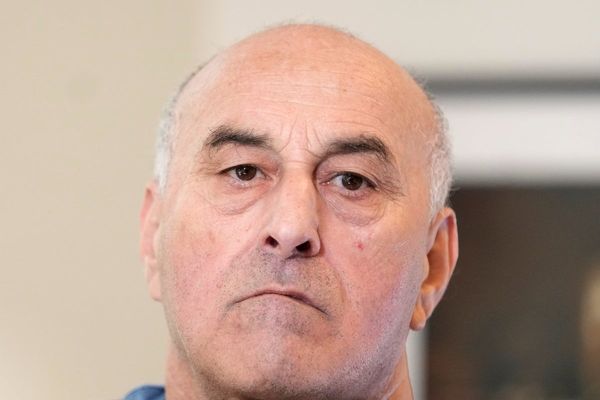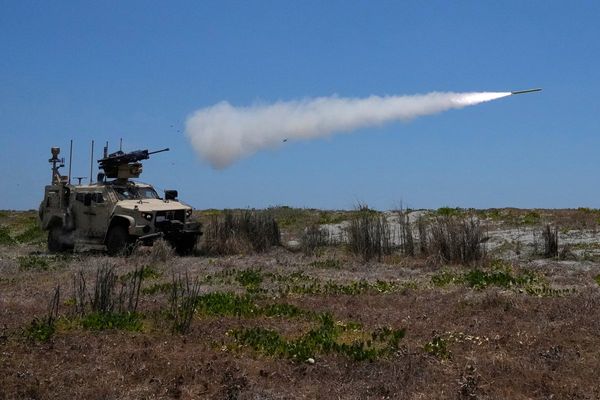As we approach the halfway point of the NHL season, there is plenty to be shocked about around the league. Did anyone think the Ducks would sit this high in the Pacific, or that 26-year head-coaching veteran Paul Maurice would walk out on Winnipeg? Going forward, will the Oilers squander another year of Connor McDavid’s career and can the Maple Leafs actually win a first-round series?
That’s a snippet of the season to date and what else still lies ahead. For now, though, here’s a look at the biggest surprises so far and the biggest questions yet to be answered.
Most stats via Natural Stat Trick.

Perry Nelson/USA TODAY Sports
Biggest Questions
What Lies in Edmonton's future?
One word can describe Connor McDavid’s tenure in Edmonton: frustrating. Each year, McDavid displays how he’s the best player in the world and, each year, the Oilers show how they can’t sustain a contending team around their superstar. Midway through the 2021–22 season, Edmonton has reached another low point. The team is three points out of a wild-card spot, has lost 12 of its last 14 games and coach Dave Tippett is running out of time.
The Oilers will enter free agency with the sixth-least amount of cap space, leaving little room for roster reconstruction beyond a trade. Anything less than a deep playoff run results in stalemate. Edmonton’s last prayer seems to be finding someone other than Mikko Koskinen to play in net, and hope to capture postseason magic.
Even then, though, the Oilers’ structural problems will persist and McDavid and Draisaitl’s prime risk total waste.
How will Jack Eichel fit in upon his return?
Eichel, who Vegas acquired in November, is slated to make his return from neck surgery in February, according to TSN’s Chris Johnson. Before he can suit up, though, the Golden Knights have to clear more than $5 million in cap space to make room for Eichel’s $10 million cap hit. That leaves Evgeni Dadanov, Jonathan Marchessault and Reilly Smith, who each have a $5 million cap hit, as the team’s likeliest trade candidates.
If Eichel returns to form, he will help alleviate the loss of Max Pacioretty (out indefinitely with a wrist injury) and provide the No. 1 center that the Golden Knights have been searching for. Right now, Vegas already ranks fourth in goals per 60 minutes (3.43) and sixth in expected goals per 60 minutes (3.18). Eichel can help on Vegas’s 15th-ranked power play, making the Golden Knights more dynamic than they already are.
Will the NHL play a full 82-game schedule?
It would’ve seemed like a surprise that NHL players wouldn’t play in the Olympics when the season started, but the winter surge in COVID-19 cases slowly made it a reality. Faced with the highly transmissible omicron variant, the league resumed daily testing and has had to postpone nearly 100 games since Dec. 13. In turn, the NHL and the Player’s Association decided to not send players to Beijing and instead use the Olympic break to reschedule lost games.
But will that be enough? The U.S. has been averaging more than 500,000 cases per day since Jan. 4, and Canada has also been seeing its highest caseload of any point during the pandemic. Unlike the NFL and NBA, the NHL hasn’t been able to reduce the number of days players have to quarantine because of Canada’s stricter guidelines. The postponements continue to trickle through and, with that, more scheduling hurdles are on the way.
Is Alex Ovechkin forged with steel, a cyborg secretly loose on the NHL?
Ovechkin’s career arc defies expectations of the modern athlete. A player whose game is a blend of power, speed and skill shouldn’t be having this much success this late in his career. And yet, Ovechkin is on pace to become the first player aged 36-or-older to score 50-plus goals in a season. The even scarier part? Ovi ranks top 10 in assists, too.
He has already taken down the NHL’s all-time power-play goals record. The Great One has no doubt that Ovechkin will pass his all-time career scoring mark (894). Will he or won’t he can only be asked so many times, and the answer won’t come until 2024 at the earliest. For now, though, it might be best to wonder if Ovechkin is simply constructed with different material than everyone else. It seems likely.
Will this year be the year for Toronto?
It’s a question that inevitably answers itself by the end of the first round. Maybe, the better question is “Why is this year different from every other year?” The first answer is obvious: Jack Campbell. After a strong 2020–21 campaign, the 30-year-old netminder has continued it this season, ranking second in save percentage (.931), second in goals saved above average per 60 minutes (0.66) and fourth in goals-against average (2.13). Elite goaltending solves a myriad of problems, but unveils them when it disappears. (Campbell had a mediocre 0.892 save percentage in three consecutive first round losses to the Canadiens last year.)
The second answer, unlike pre-pandemic times, lies with the Maple Leafs’ 5-on-5 defense. In back-to-back seasons, Toronto has ranked within the top 13 in expected goals against per 60 minutes. While not exceptional, the Maple Leafs’ improved defensive play provides more stability and means that Toronto can withstand some offensive dips. Of course, it doesn’t hurt when Auston Matthews is playing some of the best hockey of his career.
The Leafs aren’t a radically different team. But, Toronto has enough going for it to remain a contender and win its first playoff series in 18 years.

Isaiah J. Downing/USA TODAY Sports
Biggest Surprises
Flashes of hope in Anaheim and Detroit
Two teams—both of which have had a top-10 pick in each of the last three drafts—have evaded the rebuilding blues and provided early returns on each organization’s youth movement.
Of the Ducks and Red Wings, Anaheim’s turnaround has been the most unexpected.
For the first time since 2015, the Ducks entered the New Year with a .500 record. The recent improvement has come from two key areas: goal scoring and backup goaltending. Anaheim, which scored the league’s second-fewest goals over the previous three seasons, is up to a league-average 2.92 goals per game, thanks to 24-year-old right wing Troy Terry’s out-of-nowhere breakout. While John Gibson has rebounded this season, next to no backup has performed better than Anthony Stolarz. His save percentage (.919), goals against average (2.66) and goals saved above average per 60 minutes (0.62) all rank second among eligible backups. Trevor Zegras’s Calder campaign doesn’t hurt, either.
All of that, together, has Anaheim third in the Pacific. In the Atlantic, Detroit is the league’s best example of a nascent youth movement starting to come to fruition. Each of the team’s top-five leaders in points are 26 years old or younger. The Red Wings’ top blue-line pair is comprised of Filip Hronek, 24, and Moritz Seider, 20. And best of all: Detroit is fun to watch.
The Ducks and Red Wings are far from contenders, but that isn’t the point. Early success in a rebuild helps lessen the sting from the eventual growing pains along the way.
Paul Maurice resigns
After nine seasons and five playoff appearances in Winnipeg, coach Paul Maurice abruptly resigned one week before Christmas. He said the team “needed a new voice” and cited his own dwindling passion for his decision. His exit stunned players, according to ESPN, but a 4-7-2 stretch in the lead up to his resignation left Maurice feeling like he couldn’t bring the Jets to the next level.
That “next level” has always felt elusive for Winnipeg, even though Maurice left behind a strong tenure. The Jets went 315-224-62 under his leadership, which was good enough for the league’s 11th-best record during that stretch. However, Winnipeg made the conference finals once and never returned. The burden now falls on interim coach Dave Lowry—or whoever comes next—to push the Jets back into playoff contention and toward the top of the West once again.
Montreal’s fall
The Canadiens improbable run to the Stanley Cup was exactly that—improbable. Montreal slipped into the playoffs with the fewest points of any postseason team, came back from a 3–1 deficit against Toronto in the first round and rode goaltending magic from Carey Price until the Lightning’s Andrei Vasilevskiy one-upped him in the finals. A dropoff from a spell of good fortune was expected this season, but no one expected the Canadiens to fall this hard.
Perhaps the announcement that Shea Weber wouldn’t play in 2021–22 was an omen. Through 36 games, no team in the NHL has lost more players due to injury than the Canadiens. Montreal has the league’s worst record (7-24-5), is dead last in goals per game (2.08) and 30th in goals against per game. Even worse, the Habs were outscored 33–16 and outshot by 7.3 shots per game in December. It can’t get much worse, right?
Bouncebacks in Calgary, Nashville
Before the season began, Calgary and Nashville were trending in the wrong direction. The Flames fired their coach 24 games in and finished with the franchise’s worst points percentage in five years. The Predators, meanwhile, suffered their third straight first-round exit and their contending window seemed all but closed.
But, both teams have rebounded. Before enduring the league’s biggest COVID-19 outbreak, the Flames sat in second place in the Western Conference. Second-year coach Darryl Sutter helped transform Calgary into a top-five defensive team, aided by Jacob Markstrom’s stalwart performance in net. Johnny Gaudreau, Elias Lindholm and Matthew Tkachuk all returned to form one of the NHL’s most dangerous top lines.
Since Calgary’s COVID-19 hiatus, the Predators ascended to the top spot in the West. Matt Duchene and Filip Forsberg have both scored more goals through 37 games than they did all of last season. Nashville has depth (15 players have at least 10 points) and firepower (the Preds own the league’s fourt-best power play). Suddenly, the Predators are back.
Whatever Kodak Black was doing...
No words are needed for his appearance at a Panthers game. You be the judge (NSFW, potentially.)







